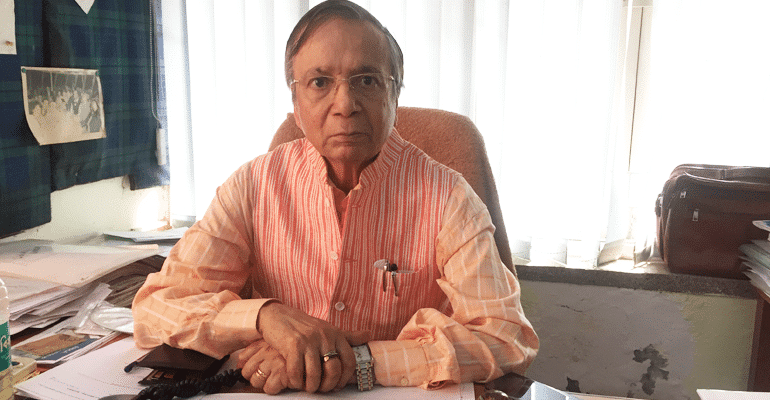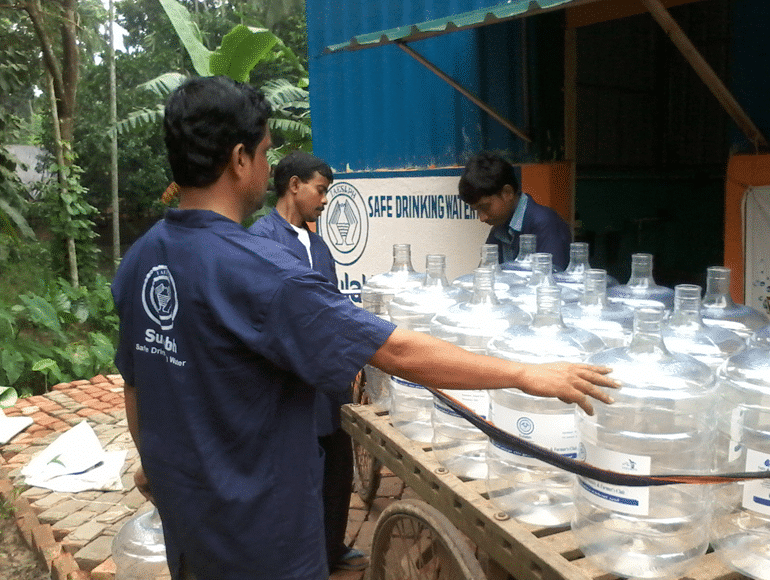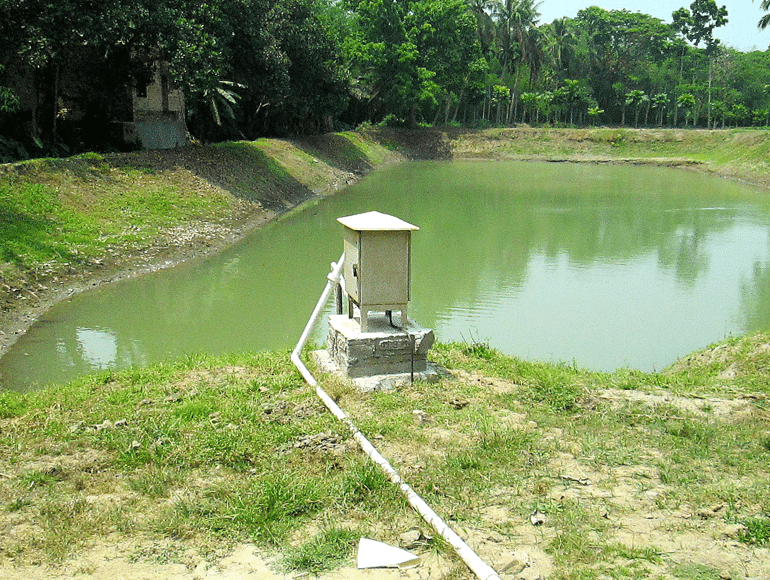We need to rethink whether “Jal hi jeevan hain” (Water is life) or Sudh jal hi jeevan hain (Pure water is life)? Not getting water to drink is bad, but consuming contaminated water is worse.
To counter this problem, in 2012, an initiative was started by this non-profit voluntary organization to save people from arsenic contamination. A notification by the Ministry of Drinking Water and Sanitation said that on July 14, 2017, the number of inhabitants affected by arsenic in West Bengal is 11,232.
On the occasion of World Water Day, which falls on March 22 every year, Life Beyond Numbers spoke to Professor KJ Nath, the vice-chancellor of Sulabh International Institute of Environmental Sanitation and Public Health and Chairman of the arsenic task force of West Bengal government. He shared with us the simple and effective solution Sulabh International has come up with to battle water contamination in the rural pockets of West Bengal.

Sulabh International’s water treatment solution converts contaminated pond water into pure drinking water and bottle it. The plant is producing around 10,000 liters of pure drinking water daily. By treating accumulated rainwater into bottled water with the use of technology, pure drinking water is being made available to people at just Rs.10 for a 20-liter pack i.e 50 paise per liter.
Sulabh’s solution is not only solving the safe drinking water problem in the villages but is also creating employment and empowering the village women as they are in charge of running the plants. Sulabh has trained the locals on the technology and now they produce around 10,000 liters of pure drinking water and distributing it to the village houses in 20 Liter packs every day. The communities have become self-sustainable in terms of access to safe drinking water.
Sulabh International Social Service Organisation (SISSO) is the brainchild of Dr. Bindeshwar Pathak and was founded in 1970 with an aim to remove untouchability and social discrimination against scavengers, a section of Indian society condemned to clean and carry human excreta manually.
In 2012, the same organization developed the pond based arsenic-free water supply system, which became a path-breaking model for entire Bengal. These program of rural water supply project was conceptualized by Sulabh with collaborative support from a French organization 1001Fontains, a French NGO.
What does Arsenic do to the human body?
As per the World Health Organization (WHO), the maximum permissible limit is 10 ppb (part per billion) of arsenic in drinking water. But according to a report published last year, it was found that there are 83 blocks in the eight districts of West Bengal where groundwater is arsenic contaminated and among them, Malda, Murshidabad and Nadia districts have higher levels of arsenic contamination.

Also, long-term exposure to arsenic from drinking water and food can cause cancer and skin lesions. It has also been associated with cardiovascular disease and diabetes. In utero and early childhood, exposure has been linked to negative impacts on cognitive development and increased deaths in young adults, mentions the WHO report.
Turning Problems into Potential
“I am with Sulabh for a very long time. There is a limit on how far you can go. At times the plants are difficult to operate and maintain. Arsenic content is high in groundwater sources, therefore we thought why not use surface water sources like rivers and ponds,” says Nath.
To tackle arsenic contamination effectively, the pilot study was carried out by Sulabh International in four villages of West Bengal. The criteria used for the selection were: the motivation and reliability of the local NGOs; willingness to get involved in the project and to provide a land; the size of the population to ensure feasibility of the project (minimum of 1.500 families) and accessibility of the site (even during rainy season).
The four villages are located in the district of North 24 pargana (MKKUS), Murshidabad (Murshidabad Friends Union Society), Nadia (Mayapur ISKON) and South 24 Pargana (Suvasgram). The cost of purifying water in these villages through this technique is feasible and therefore, it has become a model for the state that has about 28 million people living in arsenic contaminated areas.
Madhusudankati, a model by the organization ensures the supply of fully treated and safe water as per the WHO standard.

“The model that Pathak has given us is a very simple and appropriate solution when it comes to sanitation. They are equipped with low-cost user-friendly technology. You go to the market, 1 liter of water costs 20 rupees, whereas we provide water at 50 paise per liter. This is the beauty of this project,” concludes Nath.
The perennial surface water sources like ponds, rivers, lakes, spring water, dug wells, etc. are found in abundance in West Bengal, Bihar, Orissa, Assam, and many other States in the Ganga-Brahmaputra plains. This model, if implemented, could go a long way in the conservation and utilization of the traditional surface water sources in the country.

